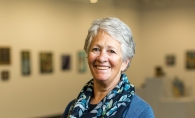Even though Olympic athletes are considered amateurs, training for any Olympic sport has become a year-round job. No one knows that better than Tony Benshoof, a White Bear Lake native, who spends much of his year readying U.S. athletes to compete in international luge competition.
In 21 years as a luge competitor, Benshoof finished fourth in the 2006 Olympics (he also competed in 2002 and 2010) and won a total of 37 international medals, the largest number won by any American athlete in international singles competition. Benshoof retired as an athlete after the 2010 Olympics, took a year off and returned in 2012 to be part-time coach of the senior and junior national teams.
Benshoof, 41, remembers watching the 1988 Olympics on television and being enamored by Slovakian luger Miro Zanovic’s performance. “I was inspired by his story and tried out the following year,” he says. He soon found out that “all the fun and excitement translates into the challenges of a very refined sport.”
He was introduced to luge in 1989 as part of a traveling U.S. luge group that invited 10- to 14-year-olds to try out for the junior national team. Benshoof found he loved the sport, and went to Lake Placid, N.Y., to join the team the following winter.
Benshoof wound up spending three or four winters training in Lake Placid, until he became skilled enough to be named to the national junior team at age 17. He spent four- to six-month seasons traveling with the team; a tutor helped him keep up with his schoolwork from White Bear High School. “Half of my luggage was books and homework,” he recalls. As a member of the senior team he competed in the 2002, 2006 and 2010 Olympics.
Benshoof says his own success as a luger was due to “a combination of things,” including his 6-foot-2-inch frame. “I’ve been a very hard worker in the gym. It takes at least 10 years of training and hard work before you become internationally competitive. I put everything I had into it," he says.
Benshoof retired from active competition because his mother was seriously ill, and because he had been suffering the effects of two back surgeries. “I didn’t think I could maintain a competitive level.”
Benshoof says he loves coaching and being able to give back to the sport. “I still get to experience the excitement of competing and training and the travel—all of the things I loved as an athlete. It’s just a different skill set now as a coach.” He typically coaches 16 senior-level and 12 junior athletes.
Fred Zimny, the U.S. junior national coach, got to know Benshoof when Benshoof was an athlete and Zimny was the team manager. “As he transitioned into being a coach he brought skills as a top-notch national and Olympic team athlete," Zimny says.
Brittney Arndt, the current women’s junior national champion, has been working with Benshoof for the past year and calls him an amazing coach. “He was an athlete himself not too long ago and he’s extremely relatable. He does everything he possibly can to help his athletes succeed in racing and training,” says Arndt, a Milwaukee native who now lives in Park City, Utah.
Once in a while, he still takes a run down a course just for fun, “but it’s not a joyride,” Benshoof says. “It can be dangerous if you don’t know what you’re doing.”
Luge 411
- Luge is one of only two Olympic sports in which results are timed to the thousandths of a second.
- Athletes reach speeds of more than 100 miles per hour.
- A trip down the track takes about 45 seconds.
- Each track has 15 to 20 curves.
- Sleds are sophisticated, custom-made vehicles of fiberglass and metal alloys.









